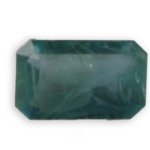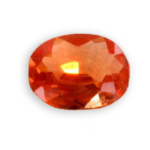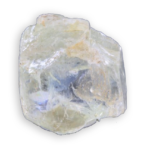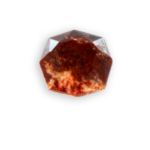
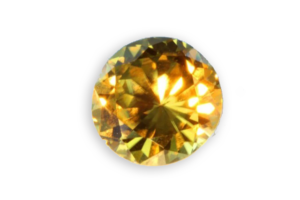
zircon
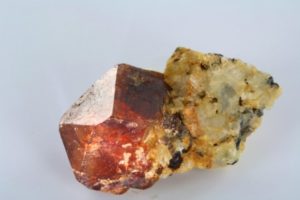
zircon crystal from Pakistan
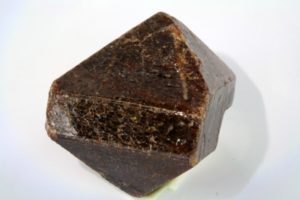
zircon crystal from Madagascar
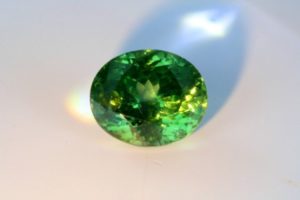
green zircon from Sri Lanka oval cut
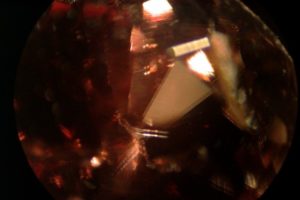
highlight of the high birefringence by edges duplication of adjacent faces
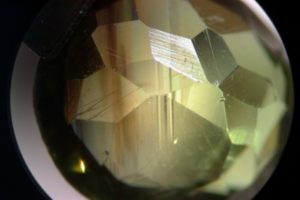
structure modified by radioactivity of a metamict zircon
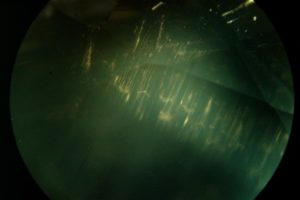
structure modified by radioactivity of a metamict zircon
Detailed sheet
zircon
Its name comes from the Arabic “zargoun” muting in “jargon”, meaning vermilion. It is known since antiquity, but under different names.
It may be colorless (rare), but also yellow, brown, orange, blue to blue-violet (called starlite) … and mostly brown green and dark red, the fire red color being called hyacinth.
Its high content of radioactive elements leads to sizable variations of physical constants: cubic zirconia is called “metamict”.
Its high refractivity and high dispersion give it a vivid and intense shine. There is a zircon with a chatoyancy effect.

CHEMICAL CHARACTERISTICS
ZrSiO4
zirconium silicate

PHYSICAL CHARACTERISTICS
Main color
red
Other colors
blue, brown, colourless, yellow, orange, green, purple
Color of streak
white
Luster
adamantine, resinous
Hardness
6.5 to 7.5
Density
3.93 to 4.75
Cleavage
indistinct
Fracture
conchoidal

OPTICAL PROPERTIES
Transparency
transparent
Refractive index
1.810 - 2.024
Double refraction
0.047
strong, positive uniaxial
visible double refraction
Yes
Dispersion
0,039(0.022)
Pleochroism
very weak
Number of colors
2
vary depending on colors
Absorption spectrum
653
bands varying depending on the origin and composition

light blue zircon spectrum system

yellow zircon spectrum system

light blue zircon spectrum system
Fluorescence
weak
orange - yellow
Inclusions
inclusions modified by the presence of uranium and thorium

CRYSTALS PROPERTIES
short prisms with pyramidal endings
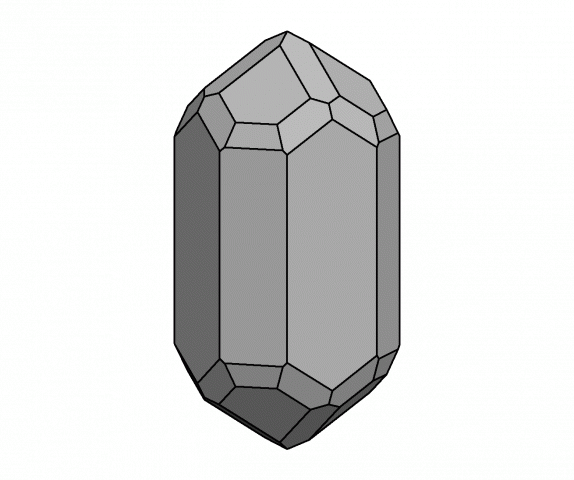
crystals system
tetragonal

OTHER INFORMATIONS
Astrological sign
Capricorn, Leo, Sagittarius
Month
december

APPROACHING GEMS
Exploited
sites
It is found in alluvial deposits, in rolled crystals, in Burma, Cambodia, Sri Lanka, Thailand, Brazil, Australia, Korea, Madagascar, Mozambique, Nigeria, Tanzania, Vietnam …
In France, the Riou Pezzouliou ore deposit, in Haute-Loire, near Le Puy en Velay, has had its moment of fame, and has delivered beautiful crystals.
It has often been confused with other stones such as tourmalines and diamond.
use in jewelry
He can not bear the shocks, and high pressure. But it has a bright and intense luster. The colorless ones are brilliant or rose cut, the colored ones are step cut.
Daily care
and precautions
Sensitive to shocks to the edges of its facets, otherwise stone of a beautiful shine, easy to maintain as resistant to heat, to household products. Zircons having been heated to make them blue, for example, are much more fragile.
imitations and
treatments
By heating between 800 and 1000 ° C, the brown zircons, very common , turn to colorless or blue, but these colors are unstable.
We can synthesize zircon, but it is only of scientific interest, while the synthetic zirconium oxide is used as a substitute to diamond.
Currently, there are on the market some light blue cambodian zircons, of a beautiful effect, obtained by heating.
Historical
healing properties
It would be a “stone of strength”, of high energy, focused on earth and it is assigned a strong power. Bringing strength, should be for all those who feel the need to compensate a weakness. The colorless one would help successful business. Containing many inclusions, some radioactive, zircon would possess a great power: to use with care. Being a red stone, it is not recommended for the aggressive, the angry, it could be used on almost all the chakras.
Venez visitez
notre site web
voillot-joaillier.fr
Lorem ipsum dolor sit amet, consectetur adipiscing elit. Ut elit tellus, luctus nec ullamcorper mattis, pulvinar dapibus leo.Lorem ipsum dolor sit amet, consectetur adipiscing elit. Ut elit tellus, luctus nec ullamcorper mattis, pulvinar dapibus leo consectetur adipiscing elit. Ut elit tellus, luctus nec.

